[vc_row][vc_column][vc_column_text text_larger=”no”]In July 2019, Northern Senior Associate Lori Tagoona and Program Lead, Northern Canada Steve Ellis travelled to Nain, Labrador to meet with participants of the Nunatsiavut Government-Dene Nahjo moose hide tanning exchange. This exchange was an example of communities addressing social, cultural, environment and economic challenges in the north. Read on to learn more about the trip as recounted by Lori.
In my mind, Labrador has always felt so far away. I know that my ataatatsiaq’s (grandfather) family was from here but after his father’s death, he was adopted by another family living on the western coast of Hudson Bay. My ataatatsiaq built his life in the Kivalliq region; he worked as an RCMP Special Constable, married my ukuakuluk and raised a family in what was then called Eskimo Point, now known as the Hamlet of Arviat. My ataatatsiaq’s journey from Labrador to Eskimo Point would have taken weeks, maybe even months. By contrast, my journey from Iqaluit to Nain took three days by air, with stops in Ottawa, Toronto, St. Johns and Goose Bay.
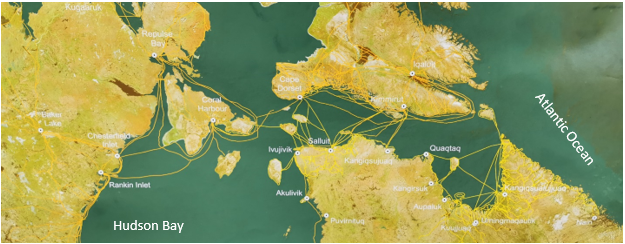
As we flew from Goose Bay to Nain, I watched the landscape of rolling hills full of deciduous trees transform into scattered coastal islands and barren peaks. This familiar arctic landscape reminded me of home, though the presence of trees confused me. At home we have an expression which goes “same but different”. For me, this land was the same, but different.
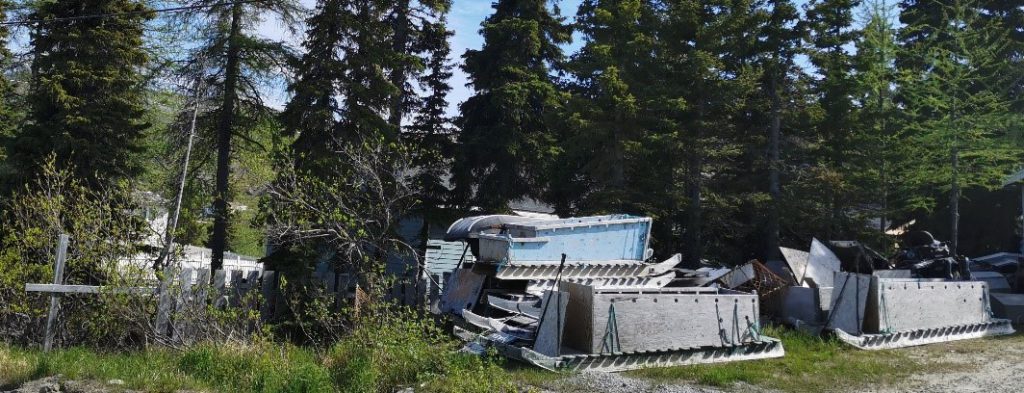
An indicator of change heavily impacting Inuit is the health, abundance, and migration of several wildlife species, notably caribou and moose. In Nunatsiavut, caribou populations have crashed so drastically that Inuit have placed a moratorium on the harvesting of the George River Caribou herd. While there are many factors associated with the decline in caribou populations, some of the changes include invasion of new, less nutritious plant species, increased presence of parasitic flies, and increased frequency of winter icing. Ecologically, caribou play an important role in grazing plant communities and supporting predatory populations.
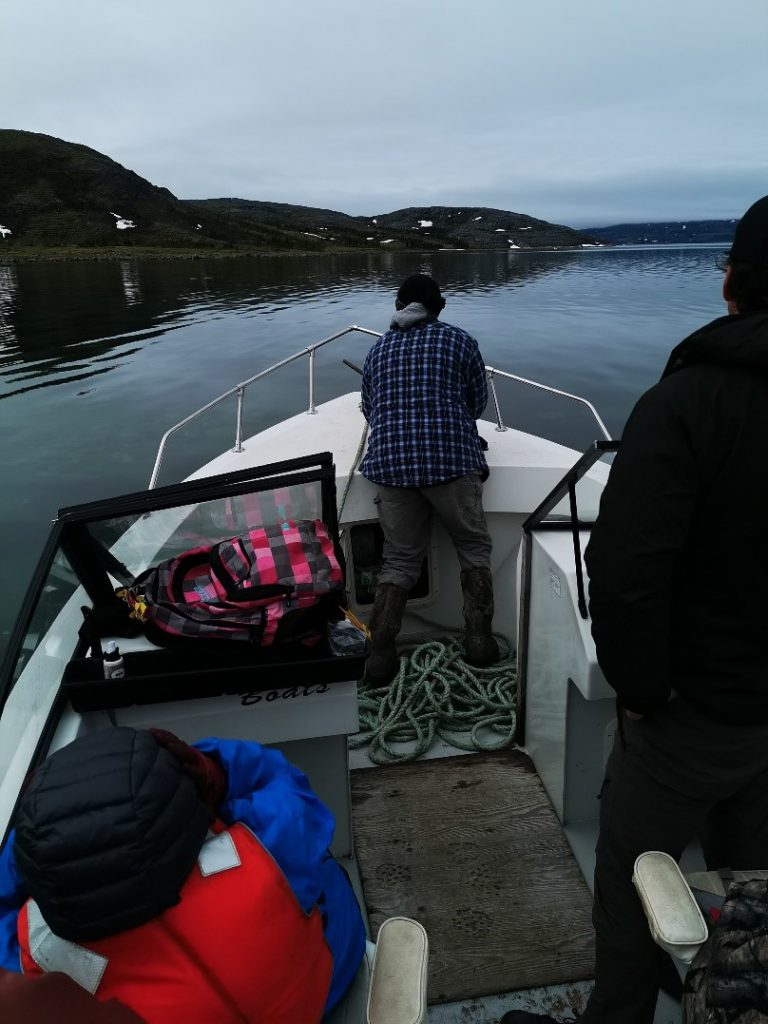
For Inuit, this triggers a need to respond to these environmental changes through resilience and adaptation. While caribou populations have dropped, moose populations are migrating further north. By partnering with Dene Nahjo, a project of Tides Canada’s shared platform, Inuit are consciously choosing to take advantage of this new opportunity. Rather than relying on southern academics, knowledge is being transmitted and adapted from Indigenous partners in the east and west.
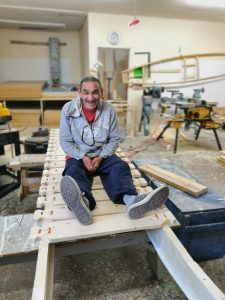
After landing in Nain, we travelled by speedboat to Saattusuakuluk, the campsite where the hide tanning workshop was taking place. As Melaw Nakehk’o of Dene Nahjo said, “I’ve never trusted anyone as much as I’ve trusted an Indigenous man traveling by boat in his traditional territory”. As I read those words I think of how Wilson effortless zig zagged through narrow channels and shallow waters – passages ingrained in his memory.
When we arrived, we met with the hide tanners from Dene Nahjo, the participants from Nunatsiavut, and the camp staff. Together, they’d created a small community of about 30 people, working together to build a positive learning environment.

Centre: Prepping the edges. Rosie Hurley, Jennifer Semigak and Josephine (Mikki) Obed of Nunatsiavut.
Right: Tying the hide to the frame. Steve Ellis pairing with Jenny Merkuratsuk as we prep the hide for fleshing.
Under the guidance of Celine, Stephanie, Adrian, Melaw, and Danya, this new community worked together naturally. Collectively, the workload was shared as participants dehaired the moose skin, prepared the edges, tied the hide to the frame and fleshed it.
No one was delegated a specific task, it was left up to each individual to find a space where they could be useful. Each task was always fulfilled and things flowed naturally. Each day at camp flowed like this.
There were no set agendas and the learning was constant; the sharing went both ways. At one point, a seal was harvested and there was an opportunity for Inuit to show the Dene Nahjo team how they butcher the seal and prepare its skin for use. This practice was the same as fleshing a moose hide, but different. Same idea, different tools and techniques.

Centre: Sharing the catch. Buddy Merkuratsuk and Sean Obed watch as Adrian butchers his first seal. Buddy’s son Simeonie shares fresh seal heart and liver with the women.
Right: Fleshing a sealskin. Jenny and Rosie team up to flesh the sealskin as Celine observes.
This kind of experience is good for the soul. For myself, it helped me realize how closely connected I am to other Inuit. It wasn’t until I looked at the map that I realized Nain is closer to Iqaluit than Iqaluit is to my home community of Rankin Inlet. The difference is there is a direct flight between Rankin Inlet and Iqaluit. Nain only feels far because of artificial barriers like provincial borders and aerial transportation routes. Also, while the land is different, and the dialect is different, ultimately, we are still of the same people.
As for the workshop, while tanning moose hide is different, and incorporates different tools and techniques, the concept of respectfully harvesting an animal and preparing its hide for use is the same. While Inuit and Dene are different, we share the north, we share common principles, and we are of the same place.
We are different, but the same.
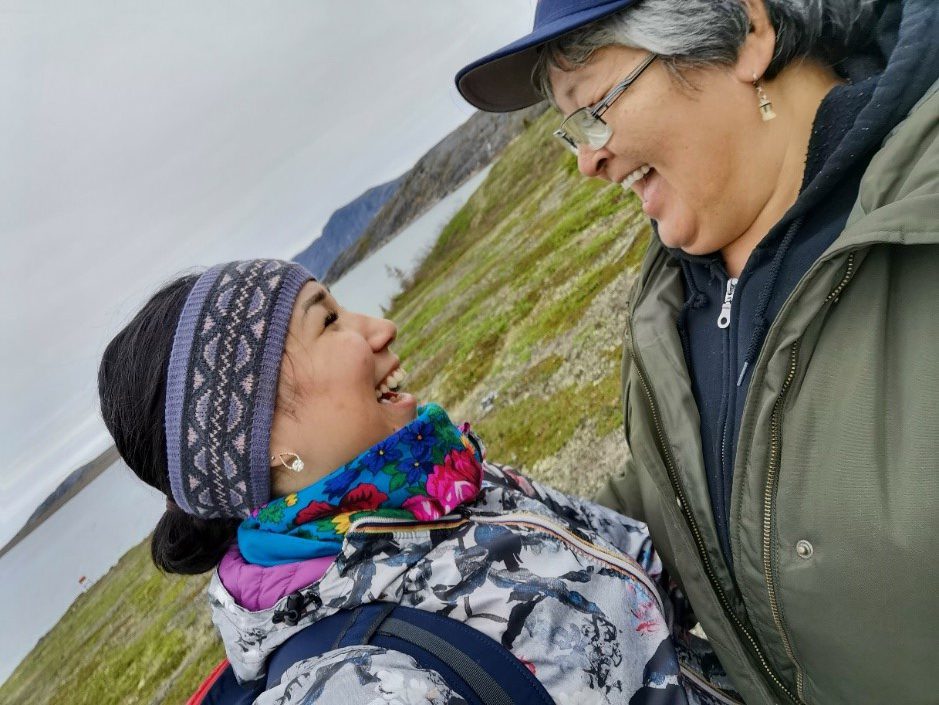 [/vc_column_text][/vc_column][/vc_row]
[/vc_column_text][/vc_column][/vc_row]